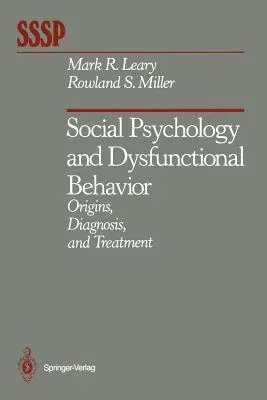Mark R Leary
(Author)Social Psychology and Dysfunctional Behavior: Origins, Diagnosis, and Treatment (Softcover Reprint of the Original 1st 1986)Paperback - Softcover Reprint of the Original 1st 1986, 1 December 2011

Qty
1
Turbo
Ships in 2 - 3 days
In Stock
Free Delivery
Cash on Delivery
15 Days
Free Returns
Secure Checkout
Part of Series
Springer Social Psychology
Part of Series
Springer Series in Social Psychology
Print Length
262 pages
Language
English
Publisher
Springer
Date Published
1 Dec 2011
ISBN-10
1461395690
ISBN-13
9781461395690
Description
Product Details
Authors:
Book Edition:
Softcover Reprint of the Original 1st 1986
Book Format:
Paperback
Country of Origin:
NL
Date Published:
1 December 2011
Dimensions:
23.39 x
15.6 x
1.52 cm
ISBN-10:
1461395690
ISBN-13:
9781461395690
Language:
English
Location:
New York, NY
Pages:
262
Publisher:
Weight:
399.16 gm

